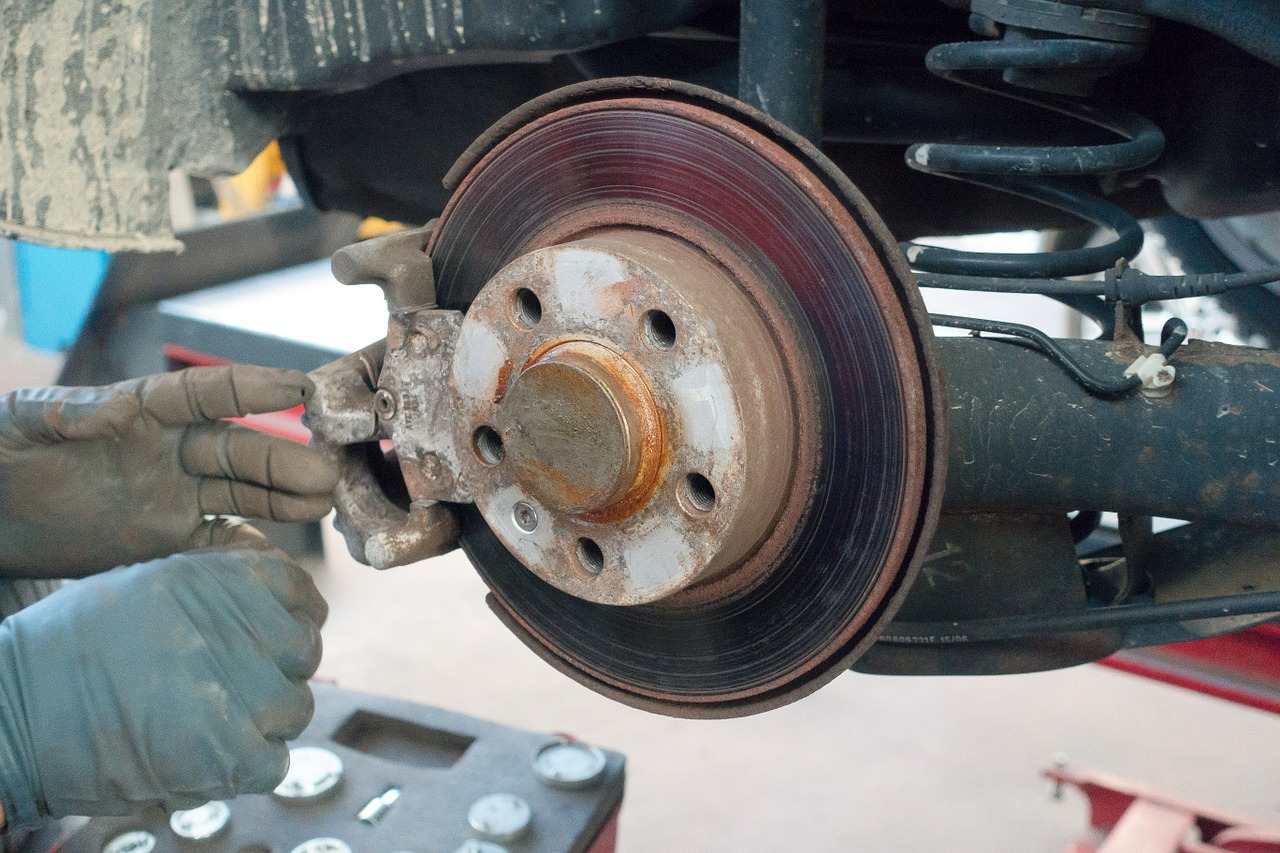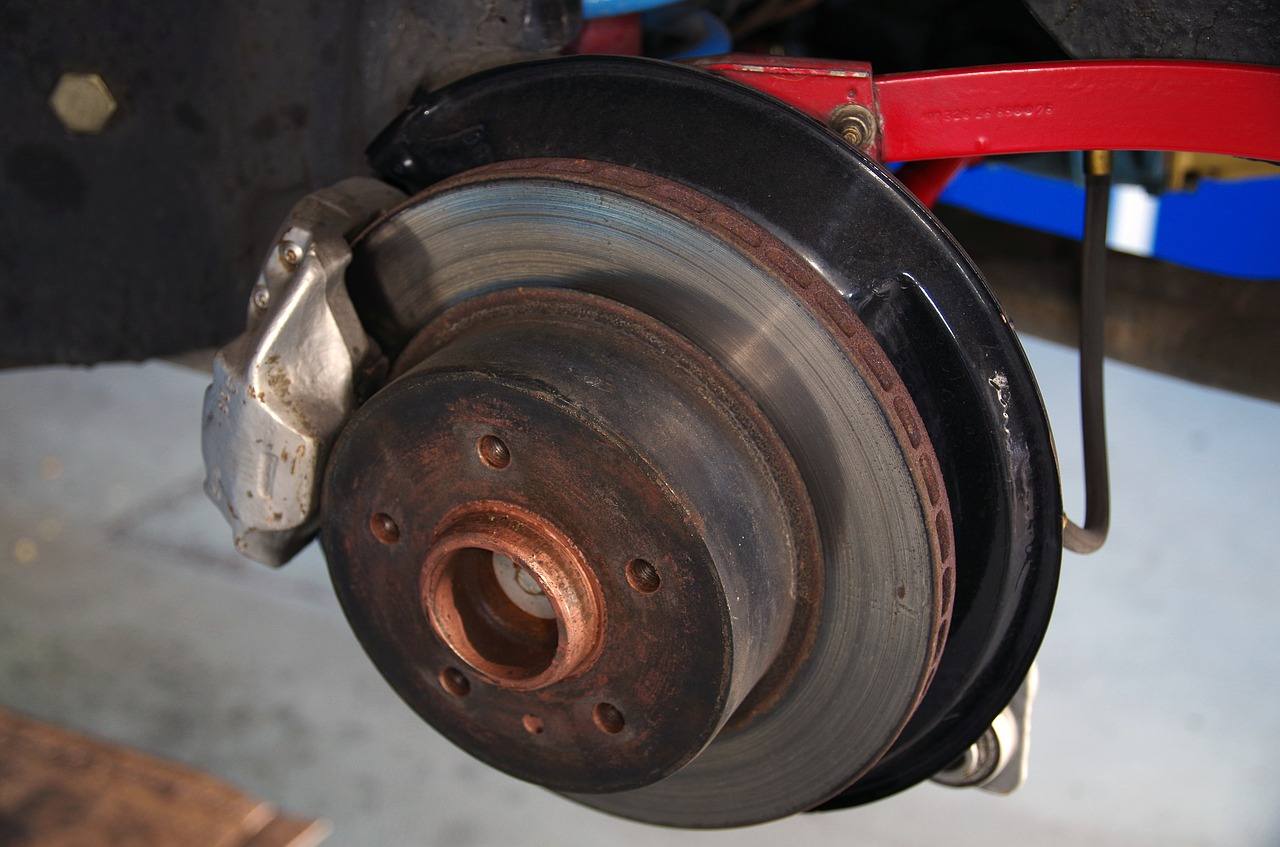As everyone knows, brakes are crucial to a car’s safety. If the brakes don’t do their job just right, it could lead to a horrible car accident. The rotors play an important part in the braking system’s performance. That’s why you should know when to do brake rotors turning. Turning rotors on car at the right time will help you stay safe on the road and save money on car maintenance.
Contents
What Does Turning Rotors Mean?
Turning brake rotors means lathing or machining the rotors to peel off excess material from the brake pads. Doing this protects the rotors from warping and grinding while giving the pads an extending life.
Do I need to turn my rotors? Yes. Rotors turning is necessary for improving a car’s braking performance. They are a key component of a car’s braking system but they can wear out due to the friction with the brake pads.
The friction causes the metal in these components to wear down and when this happens, it may result in poor handling, shorter stopping distances, or uneven brake performance. So, turning rotors is necessary for both safety and fuel economy reasons.

Brake Rotors Turning: When to Do That?
It’s necessary to rotate rotors to prevent warping and improve the braking performance of your car. Rotors may last anywhere between 30,000 and 70,000 miles. However, if you drive on rough roads or drive aggressively in general, you may want to have the rotors turned sooner than later.
So, when to turn rotors of your car? Let’s find out:
After the rotors warp
The most common reason is warping. Brake rotors are fairly thin, and over time, they can warp. Warped rotors no longer turn smoothly. This can result in uneven tire wear and an overall decrease in braking power. An experienced mechanic will usually be able to tell if your brake rotors are warped by inspecting them.
When replacing the brake pads
Do I need to turn rotors when changing brake pads? Yes, you do. The brake pads take the form of a friction surface when applied to a brake rotor’s smooth center surface. When you apply the brakes, the contact of the pads to the rotor surface will be uneven if the rotor is warped. So, when changing the pads, the rotors should also be turned for a smooth surface.
At every other brake change
Turning the rotors is good during every other brake change. Doing this protects the rotors from warping and extra deposits on their surfaces. Regular braking causes hot spots and wear on the rotors, leading to warping. Machining them ensures that the surfaces become smooth again for a full-functioning performance.
If you want to keep up with when to turn the brake rotors of your car, call up a trusted mechanic and ask for their recommendations. Only experts can tell when to replace or machine them.
Turning Rotors vs Replacing: The Differences
Rotors are made of cast iron and are designed to last for a long time. However, they unevenly wear out or warp because of the pads pressing against them at the time of applying the brakes. For a full-functioning braking system, it’s necessary to either brake rotors turning or replacing.
What Is Rotor Turning and Replacing?
Turning means lathing the rotors to smoothen their uneven surfaces. Rotors become rutted or oxidized because of normal wear and constant friction with brake pads. While machining brings the rotors back to a functioning condition, it also makes them thinner. So, turning at each brake service will definitely be overkill.
Replacing rotors means changing the old ones for new units. If the rotors are not in the condition of lathing, you have to replace them with new or functioning ones. The rotors have to have a minimum thickness to be a part of the braking system. If repeated machining makes them too thin, you cannot use them anymore.
SEE MORE
- What Metals Are Used In Making Brake Rotors?
- Simple Steps to Changing Drum Brakes
When to Do Turning or Replacing
Apart from the causes mentioned in the previous section, brake rotors turning should be done when you hear an audible squeal at the time of braking. Such a sound indicates either brake pads wear or rotor warping.
On the other hand, replacement should be done when the rotors are visually damaged. Change them when there are cracks or excessive corrosion or warping. Excessive machining is another reason as it makes the rotors too thin to function. Otherwise, brake rotors have a long lifespan and last for thousands of miles.
Costs of Turning and Replacing
Rotor machining is like any other brake job. It is likely to take two hours in a repair shop and depending on the hourly rate, the total cost could be between $100 and $200.
Rotor replacement is expensive because you have to pay for the parts and the labor. In total, this task may cost around $350 to $500.



